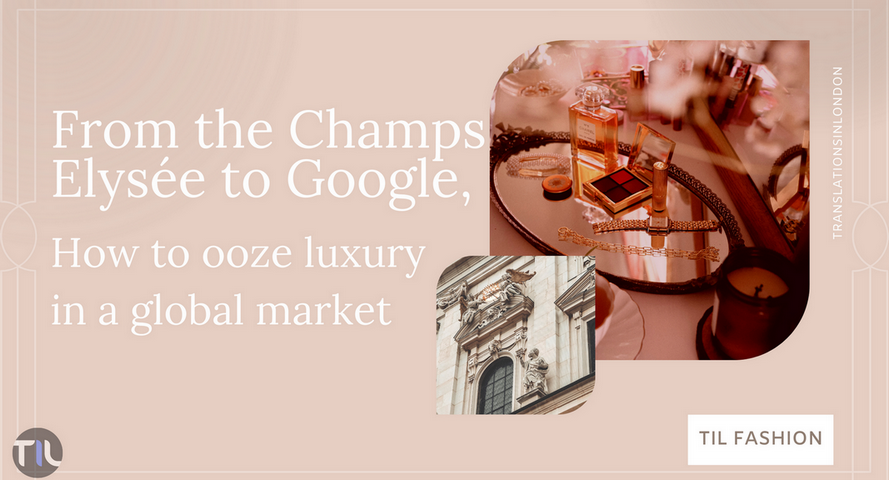Technology has had a huge impact on all our daily lives from the way we communicate, we work, we entertain ourselves and how we shop. Not only that, but the pandemic has also been a strong push for customers towards online shopping, offering digital marketplaces as a new way of finding clothes when doing it in-person was no longer an option.
It has even been evaluated that “digital, third-party marketplaces are seeing an 81% increase in gross merchandise value year-over-year thus far in 2021” (Kaleigh Moore, 2021). This massive shift in clothes consumption has inevitably affected a huge part of the fashion industry – including luxury brands.
If luxury brands had a reputation for having a marketing strategy that strongly differed from fast fashion, they have been quickly forced to step away from their restrictive promoting techniques mainly made through dedicated fashion magazines and personal selling in order to embrace this sudden frenzy surrounding online shopping. These online marketplaces now offer customers access to luxury brands that would have only been available to them by visiting a boutique (or sometimes even a foreign country such as Italy or France where many of these costly brands are located). In-store shopping restrictions gave luxury brands a final push to join and adapt to the frantic online shopping.
With this sharp shift from in-store to online shopping, luxury brands had to smoothly adapt to the ways of e-commerce – a sector that mainly relies on product discovery and requires a swifter approach.
Having a localisation strategy becomes a compulsory step for luxury brands that had and want to maintain their international prestige presence. As opposed to their old marketing strategy involving techniques such as sponsored events or personal selling, online marketplaces mainly revolve around marketing: their e-commerce is their passe-partout in a competitive and fast global market. Product descriptions, detailed pictures need to ooze the same prestige than a boutique in a luxury street has whilst reaching a greater audience in multiple countries.
Replicating the same user experience on a e-commerce site involves a strategy based entirely on the buyers’ journey by creating the same luxurious, customer oriented environment in a website which embodies different cultures, shopping habits, currencies and sizes.
Partnering with a LSP that is aware of UX will help high-end fashion companies to replicate the luxurious experience in their stores.

Mimicking the brand’s voice
Along with the usual terminology lists and style guides, our luxury specialised translators can get brand guidelines in order to craft a final product that will fit seamlessly with the company’s image.
For instance, Chanel’s marketing effort mainly revolves around conveying the same amount of elegance and grace Coco Chanel was known for. This sense of distinction needs to be felt in their website and in the products descriptions since it is considered to be their brand’s voice, and it would be the top priority for a translator hired by Chanel.
Some adjectives can be banned and replaced by required synonyms, attention to details is key in luxury translations which is why the products even go through a thorough review procedure in order to protect the brand’s voice. The standards are high, and our specialized translators want to make sure to work closely with the client as to achieve the prestigious translation desired.
Literary fair
When dealing with translations for a luxury brand, the expectations regarding the quality of the writing is about more than just preserving the brand’s voice – a certain flair needs to be achieved in the target language. In the same way, the product documentation needs to sell a whole brand experience, it also needs to carry the same amount of finesse the original text did. Hiring our specialized translators is the best way to assure a seamless rendition of the source text’s panache.
This includes all the rhymes and poetic sonority the brand could have included in their descriptions, but also translation choices such as keeping a term in its original language or finding an equivalent for it. Translations for luxury brands implies a lot of transcreation but also stylistic considerations that wouldn’t be taken into account in any other sector.
Seeking perfection
If those review procedures are so thorough, it is because luxury brands did not achieve such seamless reputations by being good or average – their prestige lies in perfection.
Their marketing is immaculate and their brand image pristine, those high standards luxury brands hold towards themselves make the job of our fashion translators quite high-staked. There can be no mistake in the translations that will accompany their fine products. It is a matter of not damaging the brand’s seamless reputation, the way they are perceived make the customers’ expectations quite high which is why no error in the product documentation can be tolerated.
Conclusion
Promoting a luxury brand on online marketplaces is an entirely different process than with fast fashion. It is a long and thorough one that involves requirements from the client and reviewing procedures in order to replicate the brand’s voice seamlessly. Hiring our team of specialized translators guarantees you to preserve the experience of a classy boutique in a luxury street through fine translations that ooze the same prestige.
To ensure a good localisation strategy, reach out to our agency!


